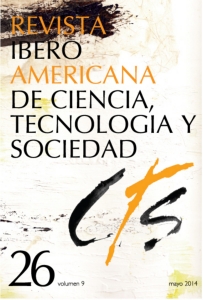The role of science and technology in the first years of Colciencias
DOI:
https://doi.org/10.52712/issn.1850-0013-596Keywords:
colciencias, science and technology policy, principal-agentAbstract
This paper attempts to answer the following question: to what extent thinking and engaging in discussions about science and technology policies can solve natural tensions among science and technology policy makers and therefore legitimate the decisions taken within national systems of science and technology? Focusing on the first two decades since the creation of Colciencias, the authors of this article conclude that the participation of this organization in discussions of science and technology, as well as its concern about the existing economic model at that moment, allowed Colciencias to achieve a greater consistency and coherence between instruments and science policies. It also helped the organization to consolidate a genuine dialogue with the other actors that were implementing science and technological policies as well.
Downloads
References
BRAUN, D. (1993): “Who Governs Intermediary Agencies? Principal-Agent Relations in Research Policy-Making”, Journal of Public Policy, vol. 13, n° 2, pp. 135 – 162.
BRAUN, D.; GUSTON, D. (2003): “Principal-Agent Theory and Research Policy: An Introduction”, Science and Public Policy, vol. 30, n° 5, pp. 302 - 308.
BUSH, V. (1945): Science - The Endless Frontier, Washington DC, NSF.
CHAPARRO, F. (1998): Conocimiento, Innovación y Construcción de Sociedad. Una Agenda para la Colombia del Siglo XXI, Bogotá, Colciencias.
COLCIENCIAS. (1979): “Conferencia de las Naciones Unidas sobre la Ciencia y la Tecnología para el desarrollo (Viena)”, Revista Ciencia Tecnología y Desarrollo, vol. 3, n° 2.
GARAY, L. (1998): Colombia estructura industrial e internacionalización 1967 – 1976, DNP, Colciencias, Mincomercio, Consejería Económica y Competitividad, Minhacienda, Proexport. Bogotá.
GUSTON, D. (1996): “Principal – Agent Theory and the Structure of Science Policy”, Science and Public Policy, vol. 23, n° 4, pp. 229 - 240.
GUSTON, D. (2000): Between Politics and Science, New York, Cambridge University Press.
HERRERA, A. (1973): “Los Determinantes Sociales de la Política Científica en América Latina: Política Científica Explícita y Política Científica Implícita”, Desarrollo Económico, vol. 13, n° 49, pp. 113 – 134.
JANS, T. (2007): A Framework for Public Policy Analysis and Policy Evaluation, IES Research Colloquium, 4 september.
JARAMILLO, H.; et al. (2004): “Políticas y resultados de ciencia y tecnología en Colombia”, Borradores de Investigación, n° 50, Universidad del Rosario.
POVEDA, G. (1978): Informe sobre la participación de Colombia en el Proyecto Internacional de Mecanismos e Instrumentos de Política Científica y Tecnológica, Bogotá, Fondo Colombiano de Investigaciones Científicas y Proyectos Especiales “Francisco José de Caldas”.
SAGASTI, F. (1981): “Máximo Halthy y el pensamiento latinoamericano sobre política científica y tecnológica”, Comercio Exterior, vol. 31, n° 5, pp. 564 – 567.
SAGASTI, F. (2011): Ciencia, Tecnología, Innovación. Políticas para América Latina, Lima, Fondo de la Cultura Económica.
VAITSOS, C. (1970): Strategic choices in the commercialization of technology: the point of view of the developing countries, Mimeo.
VAN DER MUELEN, B. (2003): “New Roles and Strategies of a Research Council: Intermediation of the Principal-Agent Relationship”, Science and Public Policy, vol. 30, n°5, pp. 323 – 336.
Downloads
Published
How to Cite
Issue
Section
License
Copyright (c) 2024 CC Attribution 4.0

This work is licensed under a Creative Commons Attribution 4.0 International License.
All CTS's issues and academic articles are under a CC-BY license.
Since 2007, CTS has provided open and free access to all its contents, including the complete archive of its quarterly edition and the different products presented in its electronic platform. This decision is based on the belief that offering free access to published materials helps to build a greater and better exchange of knowledge.
In turn, for the quarterly edition, CTS allows institutional and thematic repositories, as well as personal web pages, to self-archive articles in their post-print or editorial version, immediately after the publication of the final version of each issue and under the condition that a link to the original source will be incorporated into the self-archive.











